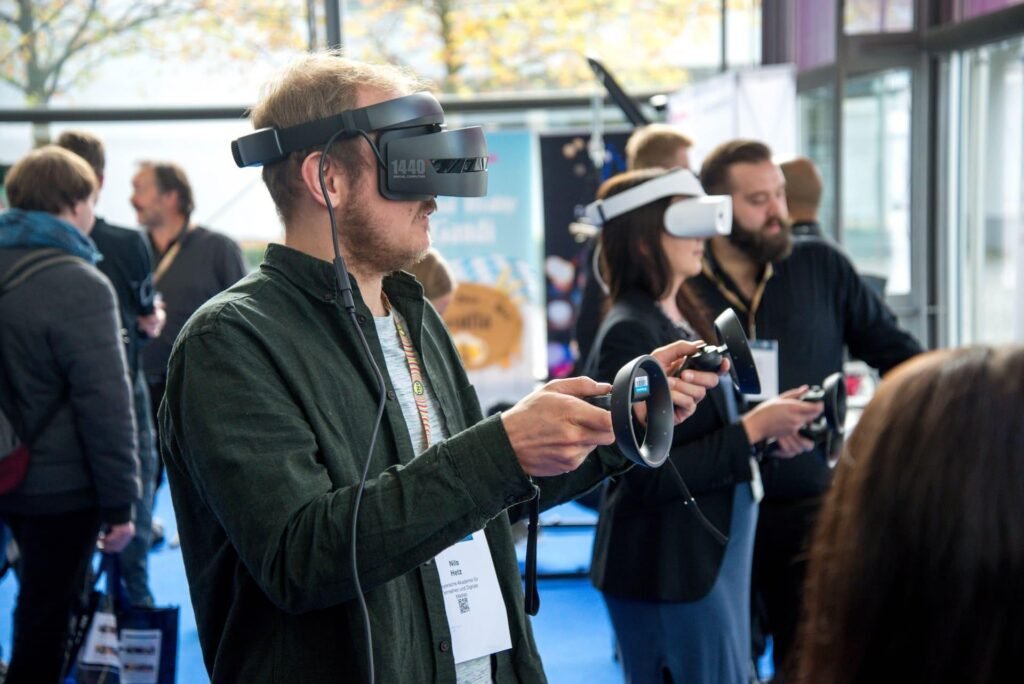The integration of technology into learning environments is driving a tremendous revolution in the education industry.
Virtual reality (VR) is one of these innovations that has grown to be an effective tool, particularly in industries like engineering and medical where having real-world experience is essential.
Higher education is starting to use virtual reality labs more frequently because they provide students with an immersive, rich learning environment that improves their academic performance.
Virtual reality technology offers a fresh approach to student engagement as conventional teaching methods advance.
It has a major effect on academic achievement, especially for those pursuing difficult subjects. Immersion VR labs provide virtual learning that does more than just replace traditional labs—it transforms education.
Improving Involvement Through c
The capacity of virtual reality labs to raise student engagement is one of its most notable benefits.
Virtual reality learning environments promote active engagement, in contrast to traditional learning environments where students could feel disengaged or inactive.
The limitations of cost, accessibility, or safety in physical labs prevent students from interacting with simulations, models, and systems in the same manner that they may in these virtual settings.
In engineering, for example, students can experiment in a secure virtual environment with intricate equipment, electrical systems, or infrastructure.
Through repeated practice without fear of failure, this hands-on approach facilitated by virtual reality labs ensures that students have a deeper comprehension of the material. VR’s lifelike simulations and immersive experiences encourage interaction, which is closely
Enhancing Learning Results through Virtual Laboratory Simulation
The shortcomings of physical labs can be largely overcome with the help of virtual lab simulations.
Students can visualize abstract concepts and apply theoretical knowledge in a controlled, virtual setting by integrating simulations in VR engineering courses.
This assists in bridging the theory-practice gap, which can be particularly difficult in technical domains like electrical and mechanical engineering.
Furthermore, teachers can customize the learning experiences in virtual reality labs to meet the needs of specific pupils thanks to their versatility.
When a student is having trouble understanding a concept, the virtual lab can provide more tasks or role-plays until the student masters the material.
In addition to making the learning process more personalized, this flexibility allows students to progress at their own speed, which is essential for optimizing academic performance.
Inclusivity and Accessibility in VR Education
The ability of virtual reality labs to improve accessibility is another important feature. The drawbacks of traditional physical labs, such as expensive equipment, upkeep requirements, or limited space, can keep some students from participating fully in experiential learning opportunities.
On the other hand, because virtual labs can be accessible from a distance, a wider audience can receive excellent, hands-on instruction regardless of where they live.
Virtual reality offers an accessible option for students with impairments or those who are experiencing logistical difficulties.
Virtual reality labs provide equal opportunity for academic performance by accommodating a range of learning methods and physical limitations. Improving learning outcomes for a variety of student populations requires this inclusivity.
Readying Pupils for the Future Labor Market
Virtual reality laboratories have a purpose beyond helping students succeed academically; they also help them get ready for the workforce of the future.
For example, in order to stay competitive in the employment market, engineering students need to be well-versed in emerging technologies. Students are exposed to the instruments and methods they will use in their careers through the use of virtual reality in engineering education.
Students may hone abilities like problem-solving, critical thinking, and decision-making in a risk-free setting by practicing in virtual reality labs that mimic real-world circumstances.
The development of the hard and soft skills required for success in engineering and other technical fields is greatly aided by these experiences.
Students with experience in these environments will have a competitive advantage as industry continues to embrace virtual reality and similar technology.
Final Thoughts: Virtual Reality Labs’ Potential for Education
Virtual reality laboratories’ introduction into the classroom represents a fundamental change in the way that students approach and comprehend difficult material.
Because virtual reality is immersive, learning can be made more individualized, engaging, and accessible, which improves academic performance.
The use of virtual reality (VR) in education not only improves learning but also gets students ready for the demands of the modern workforce, whether through hands-on experience in virtual environments or virtual lab simulations.
Virtual reality labs’ influence on academic performance will only increase as they develop further. VR learning’s adaptability, engagement, and practical abilities are revolutionizing education—especially in disciplines like engineering where practical experience is crucial.






More Stories
SEO-Friendly Web Design: User Experience
Increase Shopify Marketing Strategy with AI Avatars’ Video
The Future of E-Commerce Website Development